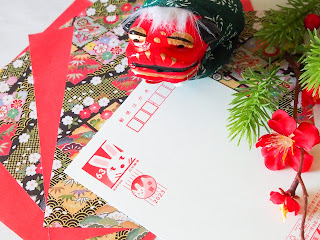Japanese Tradition: Nengajo - Ancient Japanese traditional culture with over 1000 years of history
Nengajo (New Year's greeting cards) to be sent to your loved ones, relatives, and friends as New Year's greetings.
In fact, the nengajou (New Year's greeting card) has a history of over 1,000 years. In recent years, with the spread of e-mail and SNS, more and more people do not send New Year's cards, but it is still nice to receive one!
Nengajo are greeting cards to celebrate the New Year, and are often sent using postal postcards or cards.
The word "Nenga" means "to celebrate the new year," and it is generally considered good manners to send a New Year's greeting so that it arrives on January 1.
The word "Nenga" means "New Year's greetings," and it is generally considered good manners to send a New Year's greeting card on the first day of January.
It can be sent to anyone regardless of the relationship, including close friends and those who have been indebted to you on a daily basis, as well as distant relatives and business partners.
Nengajo (New Year's greeting card) is a long-standing custom unique to Japan that originated in the Nara period (710-794).
In the Edo period (1603-1867), with the advent of the flying post, the forerunner of today's postal service, New Year's greeting cards became popular among the general public. In the Meiji era (1868-1912), the postal service was born, and Nengajo (New Year's greeting card) spread as an essential part of Japan's New Year culture along with the improved convenience of the postal system.
When did the New Year's greeting card become the style we know today? In Japan, the postal service became available to the general public during the Meiji period (1868-1912), when postcards were first issued in 1873 (Meiji 6). The appearance of postcards made it possible to send New Year's greetings easily and inexpensively, and the custom of sending New Year's cards spread rapidly.
Around 1887, sending New Year's greeting cards became a regular year-end and New Year's event, and post offices were flooded with many New Year's greeting cards, all seeking a "January 1" postmark. As a countermeasure, a special handling system for "New Year's greeting mail" was introduced, which allowed delivery with a "January 1" postmark as long as the cards were sent within a certain period at the end of the year, and the system took on its present form.
The New Year's greeting card is sent to those who have taken care of you in your daily life, expressing gratitude for the past year and wishing you a happy new year and a continued business relationship in the new year.
In Japan, there is an old custom called "New Year's Greeting Circulation," in which people visit their superiors to congratulate them on the coming of the New Year.
What is the meaning behind New Year's greeting cards?
Originally in Japan, there was a "New Year's Greeting Circle" where people visited their elders and those who had taken care of them at the beginning of the New Year, and the New Year's greeting card was originated to send greetings to those who were far away and could not make the New Year's greeting circle.
In other words, nengajo are meant to convey New Year's wishes and daily gratitude to those who are unable to visit at the beginning of the year.
Nowadays, it is common to send New Year's greeting cards to congratulate people on the New Year and to report on recent events of one's own or one's family, such as entering a higher school, getting a job, getting married, or having a baby, as well as to express gratitude for the past year's greetings. Send New Year's cards as a communication tool to let those you do not usually keep in touch with know what you are up to.



